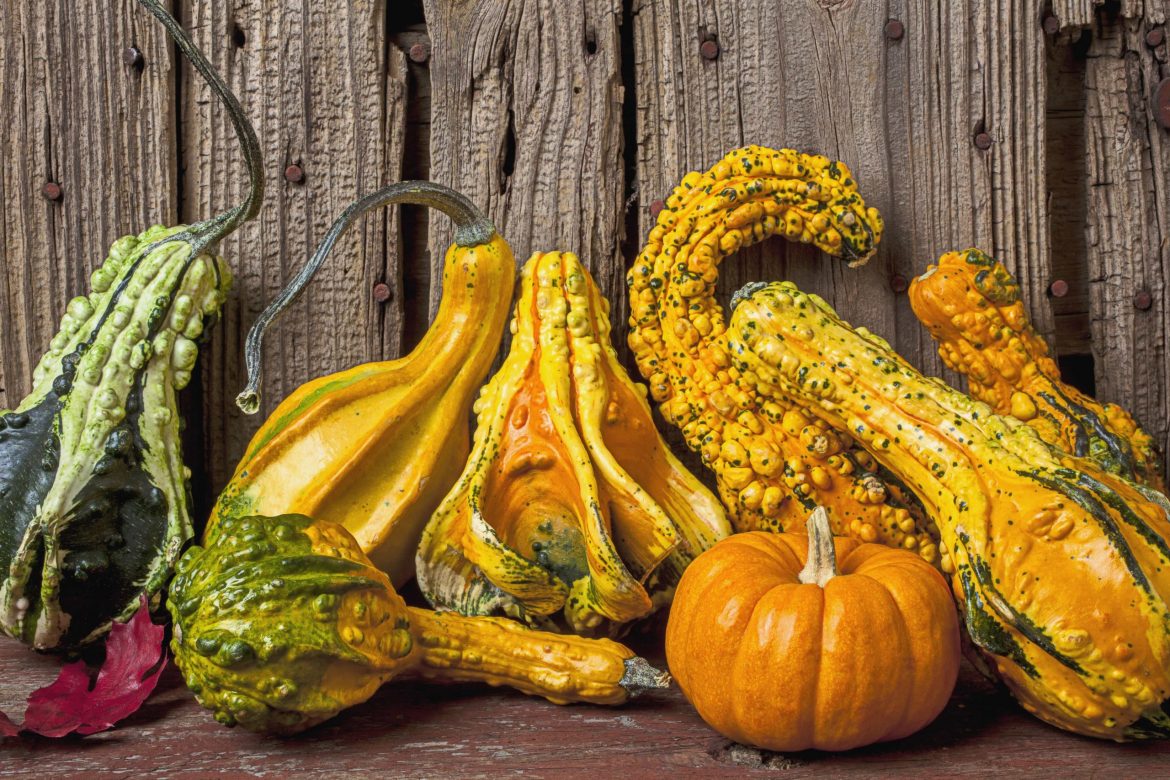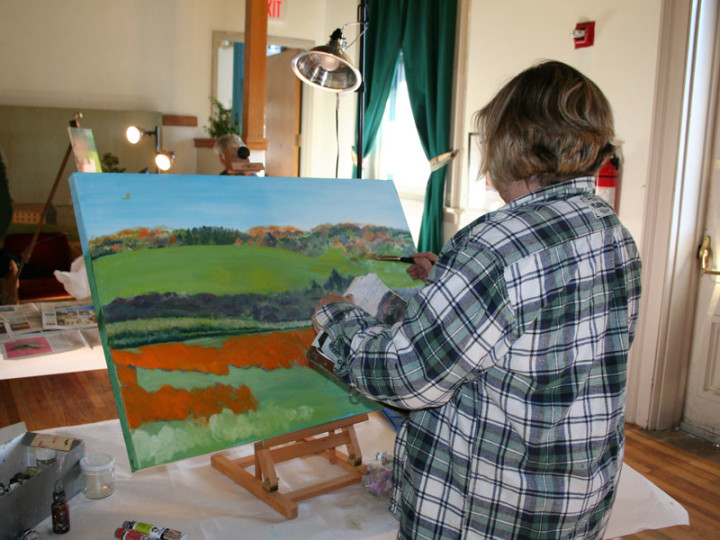
This Season
Gourds are native to New England, and the cultivation of the (ital)Cucurbitacea species began more than 15,000 years ago. One of the earliest farmed plants, their prolific growth and versatility made them a staple crop. When dehydrated, gourds develop a hard shell. An ancient practice of using forms or molds around them as they grew allowed people to create a desired shape.
Anyone who grows squash can give you dozens of recipes. So when they’re ready to harvest, be ready to cook. Zucchini parmesan, baked spaghetti squash, butternut puree, maple acorn, Patty pan sauté, yellow squash chips, zucchini bread, and pumpkin pie are favorites of growers…and buyers at local farmer’s markets. The overtly large Blue Hubbard squash generally baffles buyers. Ornament or edible? They are easily baked with rosemary and olive oil—quite delicious.
Maria Macri owner of RIvercrest Farm has been growing gourds for years. “Gourds are traditionally grown on the ground, but for anyone with limited space, a trellis or chain link fence is ideal for letting the vines climb up,” she says. Grown in full sun, Macri says “All gourds are interesting and some are useful. I especially like birdhouse gourds. Ornamental gourds are usually purchased in mixed seed packs, so you can get a variety of colors and shapes.” According to Macri, plant breeders are working on new types of gourds. “I like Autumn Wings and Goblin Eggs,” she says. “Heirloom varietal seeds can be purchases from Fedco and other seed companies, but modern hybrid squashes are more productive.”
Cucumbers, yep…they’re also gourds. Aside from a tasty and energizing snack, they offer a multitude of benefits: cucumber can erase pen, crayon, and marker, improve facial wrinkles, shine shoes, create a soothing steam when boiled, defog mirrors, eliminate bad breath, be used like WD40, and—gratefully—prevent hangovers.
Originally from Asia, the loofa (yes, your skin scrubber is a gourd) can be grown in our climate. Once dried it becomes a perfect grooming tool.
Birdhouses made of bottle gourds attract purple martins to Milford. A threatened species, they play a vital role by keeping pests from devouring our gardens. Although birdhouses used on the Wheeler Marsh at the Audubon Society are made of simulated bottle gourds, the shape attracts and hosts Milford’s martins. (You can view them via webcam at www.ctaudubon.org/coastal-center-at-milford-point.)
Much more than a seasonal decoration, gourds can be fashioned into a wide array of objects including tools, objects of art, vessels for water and wine, and—to go with that wine—a bit of music. Gourds of many varieties were and continue to be made into instruments. Dried with their own seeds to create maracas, hollowed out and covered with skins for drums, perforated with holes as wind instruments, and fitted with strings to strum as a guitar, gourds serve as home grown musical instruments that can hit every note.
And let’s not forget the king of the gourd…the pumpkin! While purchasing pumpkins is a seasonal rite of passage, picking the perfect one is easy here in Milford. Patches in town include Rivercrest Farm, Robert Treat Farm, the First Congregational Church, and Pumpkins on the Pier. They offer pumpkin aficionados a pleasant stroll while deciding which will make the perfect jack ‘o lantern.
Whether eating them, admiring them, or playing them, this ancient practical produce will surely be enjoyed for years, centuries, and millenniums to come.
(ital)—Susan Carroll Dwyer





